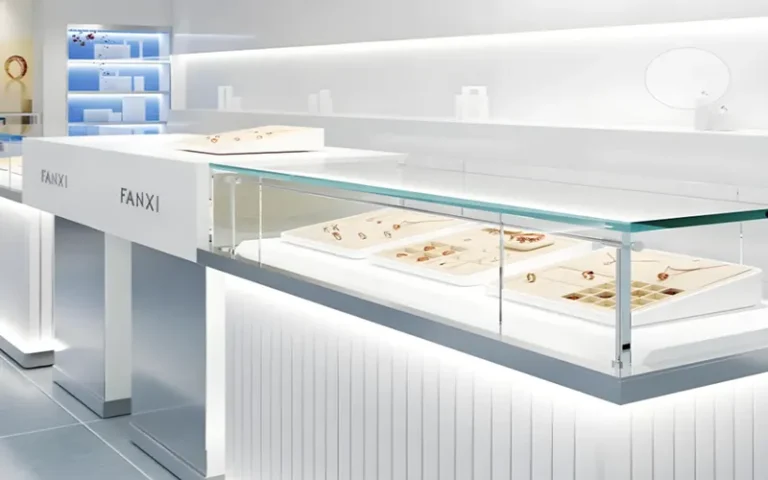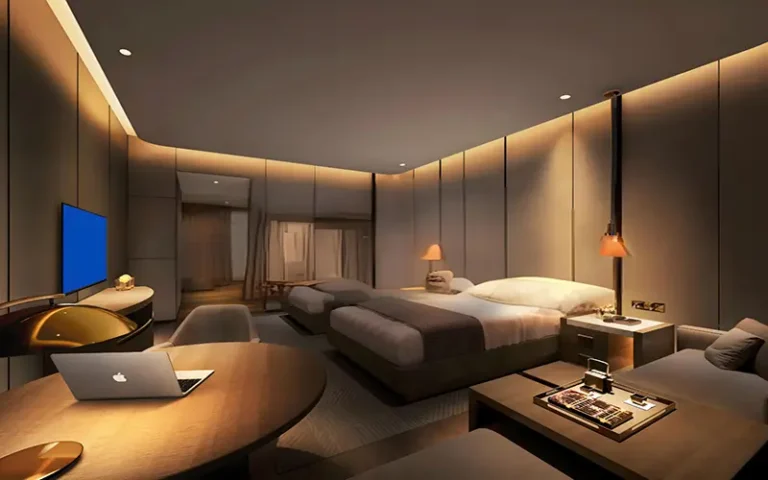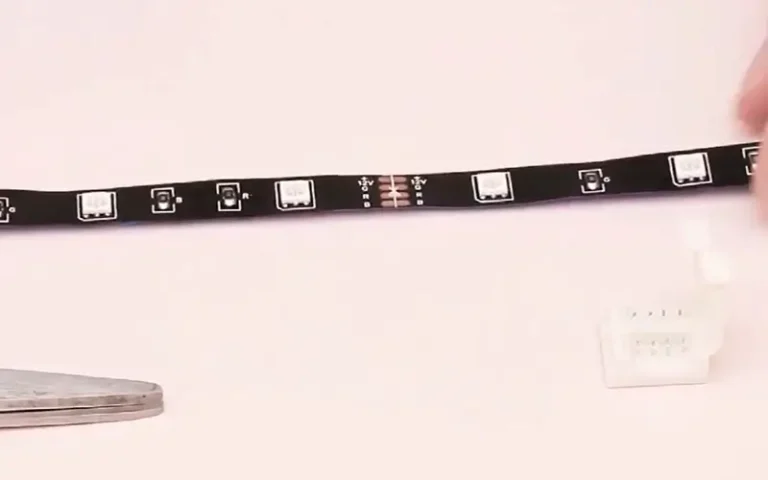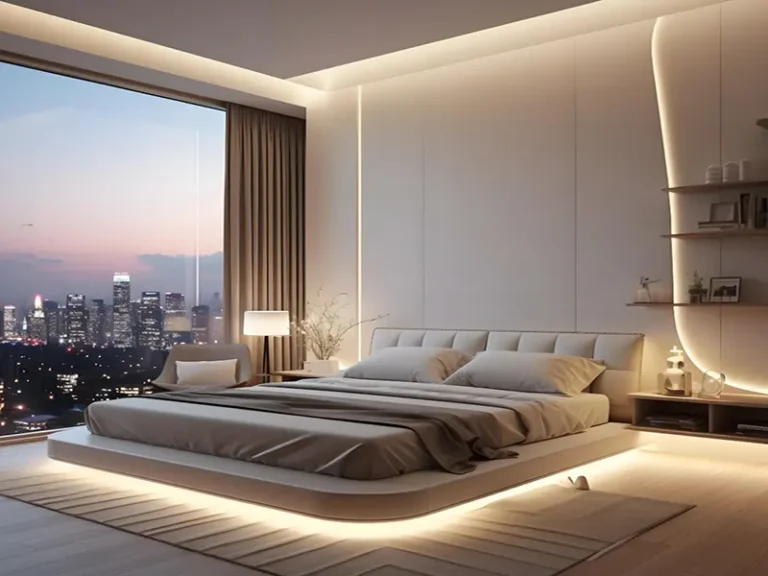How To Choose the LED Strip Lights For Kitchen Cabinets?
The kitchen is the most important core of a residential space, where we need to prepare three meals a day. Therefore, kitchen lighting is also an area we need to focus on, requiring lighting that is both practical and stylish. LED light strips have become a popular choice for enhancing the beauty of the kitchen due to their versatility and energy efficiency. Whether you are a home chef, a design enthusiast or someone who wants to modernize the kitchen, knowing how to choose and install the right kitchen cabinets LED strip lights can greatly enhance the functionality and visual appeal of your space.
Why Choose LED Strip Lights as Kitchen Cabinets?
LED strips are versatile and suitable for a wide variety of lighting designs. They are also a great choice for kitchen cabinet lighting. Here are why we chose LED strip lights for kitchen cabinets lighting:
- Energy Efficiency: Energy saving: LED products can really save energy compared to traditional lighting options because they consume significantly less electricity.
- Long life: LED lights last longer, reducing the frequency of repeated replacements, thereby reducing replacement costs.
- Customizable: Supports customization of products, such as length, color, brightness, and waterproof rating.
- Compact Design: Its slim profile makes it easy to install in small spaces, such as under or above cabinets.
- Dimmability: All of our LED strips are dimmable, allowing you to adjust the lighting intensity to create the desired atmosphere.
- Easy Installation: With an adhesive backing, LED strips can be easily installed under or inside cabinets.
Where Can LED Strip Lights be Installed in Kitchen Cabinets?
When installing LED strips in kitchen cabinets, we need to choose the right installation location. Location is crucial to achieve the best lighting effect. Here are 4 common installation options:
Under the Cabinet
Installing LED strips under the cabinet provides task lighting. This location can provide strong functional lighting and avoid shadows caused by wall cabinets. Illuminate the countertop for cutting vegetables, cooking and other activities.
It is recommended to use high-brightness warm white or neutral white light strips to improve the lighting quality of the work area.
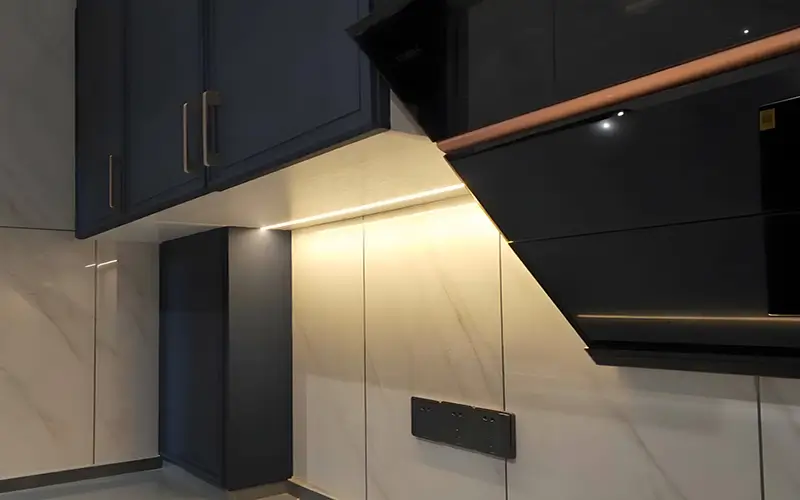
Above the Cabinet
The LED strip lights above the kitchen cabinets create a soft ambient light, adding a touch of elegance and depth to your kitchen. It is common in modern minimalist or Nordic style kitchens, and it is more cozy with warm color temperature.
Inside Cabinet Lighting
Attach LED strip lights to the inside of the kitchen cabinets door or under the partition, and they will light up automatically when the cabinet door is opened. It is very suitable for installation in spice cabinets, dish cabinets or storage cabinets, so that you can quickly find the items you need.
We recommend that LED light strips be paired with door magnetic sensors to achieve “light up when the door is opened and off when the door is closed”, improving the practicality and smart experience of the kitchen.
Toe Kick Lighting
Install a light strip at the base of the cabinet, usually with soft RGB or warm white light strips, for mood lighting or night lighting. It can also be used for low-brightness lighting at night to avoid the glare when turning on the main light, which is very suitable for families with elderly or children.
How to Choose the Right LED Strip Lights for Your Kitchen Cabinets?
If you plan to install LED strips in your cabinets, you need to confirm the installation location. At the same time, you need to consider the following details when choosing the right LED strip.More details, pls kind check How to Choose LED Tape Lights for the Kitchen?
Waterproof
Consider that the LED strip is installed in the kitchen, which is relatively humid. So we should choose IP65 or IP67 waterproof LED strips. These ratings ensure that your lights can withstand occasional splashes and moisture without affecting performance.
Dimmable
Whenever possible, choose a dimmable LED strip, which allows you to adjust the lighting intensity. This feature enables you to create different atmospheres and save energy by reducing the brightness when full lighting is not required.
Color Temperature
Measured in Kelvin (K), color temperature affects the hue of the light. For kitchens, try to choose a neutral white light of 4000K or a cool white light of 5000K. We clearly see the freshness of ingredients and cook carefully.
Voltage Selection
Most kitchen LED strips run on 12V or 24V voltage. 12V strips are suitable for smaller and shorter distance installations. Whereas 24V strips provide more consistent brightness over longer distances and are recommended for larger kitchen layouts.
Brightness
For kitchens, it is better to choose slightly brighter LED strips. The brightness of LED strips is measured in lumens. For kitchen cabinets, a brightness level between about 200 and 500 lumens per foot is usually sufficient.
Which LED Strip Lights Are Best for Kitchen Cabinets?
For kitchen cabinet lighting, we still recommend the following types of LED strips:
COB LED Strips: Offer smooth and even lighting, eliminating hotspots.
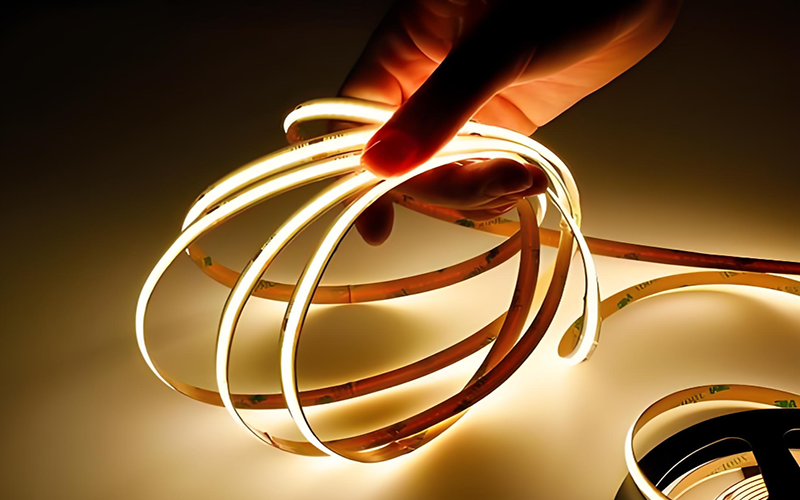
SMD 2835 Strips: Provide high brightness and are suitable for both task and accent lighting.
RGB and RGBW Strips: Allow color-changing options for a dynamic look. RGBW strips include an additional white light channel for enhanced versatility.
How to Install LED Strip Lights for Cabinets Lights?
Proper installation ensures your LED strips perform well and look great. Here are some steps to follow when you want to install LED strips in your cabinets:
Choose the Mounting Location:
First, determine whether the LED strip will be mounted under, above, inside, or along the base of the kitchen cabinet.
Measure the length of the cabinet:
Measure the length of the cabinet to be installed and then install the desired length of LED strip.
Prepare and clean the surface:
Confirm the surface you are mounting on and clean the mounting surface to ensure that the adhesive backing adheres securely.
Cut the LED Strip:
Once you have measured the length, cut the LED strip to fit the desired length following the designated cutting marks.
Connect the power supply:
Confirm the wattage of the LED strip lights and find a suitable LED power supply. Be sure the power supply meets the voltage and wattage requirements of the light strip.
Install and test the lights: Once you’ve verified the surface is clean, secure the light strip in place using 3M adhesive. Before completing the installation, turn on the lights to make sure they work as intended.
Hiding the wires:
After the installation and testing, the LED light strip needs to be fixed. For the sake of aesthetics, the wires still need to be hidden to obtain a clean and professional effect.
Conclusion
LED strip lights are perfect for kitchen cabinets lighting, enhancing both functionality and aesthetics. Before choosing an LED strip light, you need to consider factors such as location, color temperature, waterproofness, and brightness, so you can create the perfect lighting setup for your needs.
We are a manufacturer of LED strip lights and LED neon strip, please let us know if you are interested.


